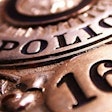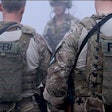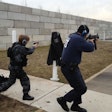Virginia Tech, Columbine, North Hollywood, Waco, MOVE, Howard Johnson's, and the Texas Tower. Because of their significant impact on American law enforcement, we know these deadly events by their names even decades later.
It was the 1966 Texas Tower shooting rampage in Austin that gave birth to the modern SWAT concept. North Hollywood caused many police departments to adopt patrol rifles. And it was the 1999 Columbine massacre that caused the overhaul of active shooter response.
Yet, over time, some major law enforcement incidents have faded into obscurity, except where they occurred. One such "forgotten" event is the July 23, 1968, Glenville Shootout and Riot, the deadliest night in the 212-year history of the city of Cleveland.
It's rare to receive a formal invitation to remember a shootout and riot. But that's what participants, like myself, received for this year's 40th anniversary commemoration of the Glenville Shootout and Riot.
If you weren't around in 1968, then you have no idea how turbulent this year really was. It is considered by many historians to be the year in which worldwide revolution came close to reality.
In the United States, the assassinations of Martin Luther King and Robert Kennedy shocked us to our core. Riots in hundreds of cities also erupted. The Vietnam War raged in Southeast Asia. Protests against the Vietnam War roiled the nation's campuses. It was a very messy time to be alive. It was even a messier time to be a cop.
Buried among 1968's turmoil and upheaval was Glenville, which if it occurred today, would be ranked among the top police confrontations of all time.
Shootouts and riots rarely occur without prior buildup, and Glenville was no exception. Like most American cities in the 1960s, Cleveland was a cauldron of unrest. That cauldron had already boiled over once, resulting in the 1966 Hough Riot that killed four people, injured dozens, led to hundreds of arrests, and destroyed dozens of buildings. Hough would serve as the preview for Glenville two years later.
After Hough, the Cleveland Police Department enacted significant changes. It hired hundreds of new officers, mandated the wearing of riot helmets as duty headgear, and created a specially trained task force to respond to potential riots.
The streets were not quiet in 1967, either. Yet despite numerous close calls, somehow Cleveland was spared the major deadly rioting experienced by Detroit and Newark. However, tensions between the Cleveland PD and Black Nationalist militants grew more intense by the day. CPD's mere presence, even on routine calls, drew large hostile crowds, and police radios blared with "officer in trouble" calls. The tension on Cleveland's seething East Side was so thick, any small incident could easily result in rioting.
The April 1968 assassination of Martin Luther King sparked mass riots in hundreds of U.S. cities. However, miraculously, Cleveland was somehow spared, at least for a little while. In the meantime, tensions and confrontations between CPD and Black Nationalists were only a spark away from disaster.
That spark came the evening of July 23, 1968. The incident involved two CPD Task Force cars working surveillance on Black Nationalist leader Fred Ahmed Evans' apartment building, which was believed to hold a large cache of weapons rumored to be used in riots in other cities.
The remainder of the Task Force was en route to beef up the surveillance, with strict orders to "take no action." Without warning, 20 to 25 Black Nationalists emerged from the building armed with shotguns and .30 caliber M-1 carbines and opened fire. The two Task Force cars were riddled. Bullets blew out the windows and flattened the tires, but miraculously the five TF officers inside were not hit.
The Glenville Shootout had begun. One TF officer said later, "This was the first time I've ever actually seen the beginning of a war."
Responding to all-city broadcasts of police being fired on, CPD cars raced to the scene. This was 1968, before body armor, portable radios, and SWAT. Officers on foot, in darkness, were armed only with .38 revolvers and shotguns and little extra ammo. They were clearly outgunned by the heavily armed Black Nationalists, who now fanned out over a several city block area in the darkness, some breaking into occupied houses to gain the high ground.
As more police reinforcements poured into the area, police casualties began to mount. Repeated rescue attempts were met by suspects deliberately targeting the downed officers and their rescuers. The intense shootout went on for 90 minutes, with sporadic gunfire lasting another 90 minutes.
It was a night of chaotic terror that no one who was there will ever forget. When the shootout had subsided, seven people were dead—three Cleveland police officers, one civilian who helped the police, and three Black Nationalists. Another dozen officers were wounded, most seriously, including one who would die years later of his wounds.
While the shootout was still raging, large angry crowds began to riot, torching buildings and vehicles (including empty police cars), looting, throwing rocks and bottles, and shooting at police and fire. The Glenville Riot had begun. And before the night was over, another four people would die.
By morning, National Guard troops arrived in strength to reinforce beleaguered police who were attempting to restore order. One CPD officer was assigned to each National Guard vehicle. By now, CPD had canceled all days off; officers worked 24/7, 12-hour shifts.
The city and its police braced for a second day of rioting.
Then came the order from the mayor. Fearing a bloodbath of retribution by police, he ordered only black officers into the riot area. All white police and all National Guard were ordered to stay outside the riot perimeter.
The mayor's plan didn't work. The second day of rioting saw more rampant looting and arson than the first day. On the third day of rioting, the mayor finally relented and "allowed" white police and Guardsmen back into the riot area. Working with their black colleagues, they eventually brought the rioting under control after four days.
In Glenville's aftermath, CPD went back to the drawing board, establishing a new, larger, better armed, and better trained tactical unit. It also bought a new armored vehicle and authorized 1,200 officers to purchase and carry individual military surplus .30 caliber M-1 carbines.
Glenville shook Cleveland to its very core. Anger turned to outrage when taxpayers learned that the M-1 carbines used by the Black Nationalists to shoot police were obtained through "Cleveland, Now," city funded charitable contributions.
The riot contributed to the mayor's early departure from office. A federal commission on urban violence released its report in a book, "Shootout in Cleveland," that pointed fingers in all directions. And visible evidence of the riot remains today in the form of the many vacant lots that dot Cleveland's East Side.
Ahmed Evans and six other Black Nationalists were convicted of murdering police officers and sent to prison. Evans died some years later of cancer, still behind bars.
Incredibly and sadly, until this year's 40th anniversary commemoration of Glenville, neither the city of Cleveland nor the CPD has ever officially acknowledged Cleveland's deadliest night. However, none of us who lived through Glenville will ever forget.
Glenville's impact on CPD continues to this day, particularly with the evolution of the tactical unit into today's CPD SWAT. That Glenville had a profound, indelible impact upon generations of Cleveland Police officers would be a gross understatement. And if CPD had an unofficial motto to describe the events of July 23, 1968, it would be: "Glenville—Never Again!"
To those who invited us to commemorate Glenville's 40th anniversary, I thank you.












